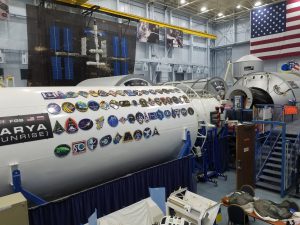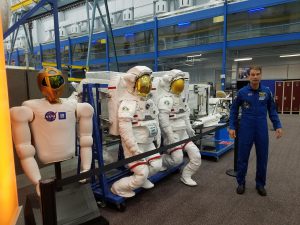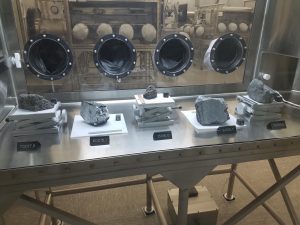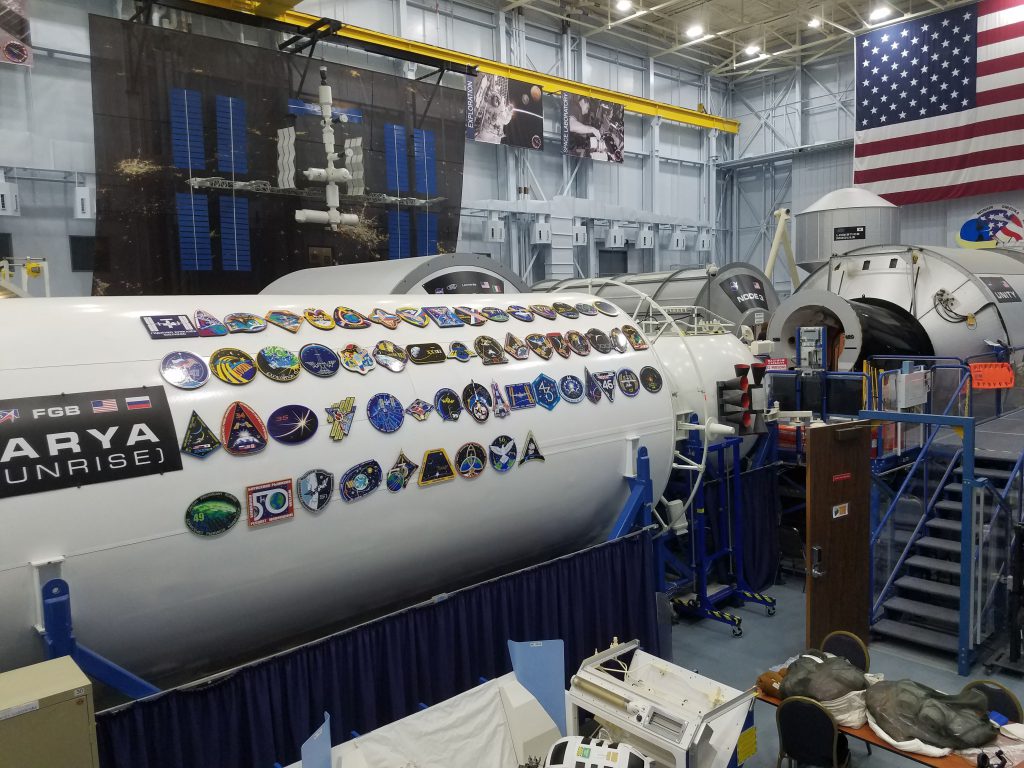
This is a meeting report from the 2019 “3rd COSPAR Meeting to Address Planetary Protection Knowledge Gaps for Human Missions and Working Meeting on Microbial and Human Health Monitoring”. As much as NASA loves acronyms, I can see why no one liked the idea of the “COSPAR-MAPPKGHMWMMHHM 2019” name.
Speaking of acronyms… COSPAR stand for the “Committee on Space Research” which is a part of ICSU (International Council for Science). As far as I can tell, COSPAR helps promote space-related research, and does so by working with a bunch of different organizations (e.g. NASA, JPL, JAXA, ESA, etc.). This meeting was held at the LPI (Lunar and Planetary Institute) in Houston. I mention all of this because I had never heard of any of these things until a couple of months ago. While it’s true that I have done an experiment on the ISS, and have since reviewed several space microbiology papers… I’m really a total neophyte when it comes to the various agencies that do space related research. Which is a shame, because there’s some really fascinating and forward thinking work going on here.
Quick review of Planetary Protection. Goal one is summarized as “Protect the earth”, also known as back contamination, this is the risk to earth posed by extraterrestrial matter. Goal two is basically “Protect other planetary bodies”, also known as forward contamination. Forward contamination occupies most of the current planetary protection work, especially as it relates to Mars. We try to limit the chance that we will transport living organisms to Mars that could take up residence there. This becomes much more challenging if we talk about sending humans there.
Day 1 started off with presentations explaining how the various agencies (JAXA, ESA, and NASA) define and deal with planetary protection. Cliff notes: they all follow the COSPAR policy and have their own complex bureaucracies for implementation.
John Rummel from SETI gave a really interesting talk on all the problems associated with human travel to Mars, ranging from physical limitations to cost to planetary protection concerns.
Much of the day was spent going over what has been discussed at previous meetings, both in terms of the science needs and the associated policy decisions. Strong arguments have been made for more intensive monitoring on the ISS and on analog habitats on earth (submarines, Antarctica research stations, Atacama Desert, etc.). Similarly, there was a lot of discussion about our lack of understanding regarding Martian weather and how that could move microbes around.

The afternoon was a series of short presentations about state of the art and current research by folks from JAXA, NASA, ESA, JPL, and various academic institutions. Fascinating stuff. Some random favorite tidbits:
–Deinococcus can survive over a year on the *outside* of the ISS.
-We do surprisingly little medical microbiology on the ISS, and even on the astronauts beforehand. Some obviously, but not much. This is not counting research projects which come and go. That being said, there’s never been an evacuation incident.
-The MinION on the ISS works really well and they’ve done the whole process, from culturing through sequencing and identification of bacteria.
-I’d never heard of the Gateway program but it’s a proposal for something like the ISS but in lunar orbit, that would be a base for Mars (and other) missions.
-The Mars500 mission seemed pretty hardcore, they locked up 6 crew members for 520 days in a pretty small module to test various protocols and social/medical issues.
-They have designed a really elaborate swabs kit for swabbing the outside of the ISS… which would make a great target for testing the long-term survival of hitchhiker microbes.
-Technophilic microbes is a term… microbes that grow well on tech. I like it.
-Saw two talks in a row that validated the findings of our ISS survey… that basically the ISS microbiome looks like a mix of people and houses.
On the second day we started off with a 2.5 hour behind-the-scenes tour of the Johnson Space Center. The first half was with Stan Love, a Shuttle astronaut who gave us the planetary protection specific tour of the ISS modules. He talked a lot about seals on spacesuits and how that vents air (and presumably microbes) into the environment. We got to check out the Mars rover mockup where the suit would stay outside. Afterwards we got to see the lunar rock handling facility which was pretty cool.
The afternoon was spent in break out groups, divided up so that there was similar expertise in each group (microbiology, engineering, operations, policy, etc.). We were tasked today with discussing how to use the microbiome to monitor human health on long-term missions. We focused a lot on the MinION because it’s the only sequencer that currently works in space which is a pretty big deal for a 3 year long Mars mission. We decided there’s an imminent need for a meta-analysis of all ISS NGS data to date. This would help inform sampling protocols, as well as the design of an analog earth system for a pilot study (e.g. something like Mars500). There was some good discussion how Nanopore could be used to detect alien biomolecules which was kind of fun to think about.

The third day started off with a speech by Kate Rubins (calling in from Russia), the astronaut and microbiologist who first used the MinION on board the ISS as a proof of principle for sequencing in space. She had some great advice about the need for automated sample prep, standardized protocols, and broadening the locations that we sample.
Afterwards we went back into our discussion groups and were tasked with discussing how to do environmental microbiome monitoring on long-term missions (ISS and Mars). This is with both forward and back contamination in mind. A lot of interesting discussions about the viability of microbes on Mars, the need to sample external surfaces, the live-dead problem (particularly important for planetary protection!) etc. The thing that really struck me was how extreme the worst-case scenarios that are being considered are. Everyone on earth dying from an alien pandemic or destroying the Martian ecosystem. Low probability to be sure (especially the first one) but can’t be ignored. The final discussion was about mitigation strategies… what can we do to minimize the risk of both forward and reverse contamination (and risks to astronaut health).
In summary, a very fascinating meeting! Especially for someone mostly on the “outside” such as myself. The COSPAR recommendations from this meeting will be forthcoming soon (in NASA terms) and I will post them here.
